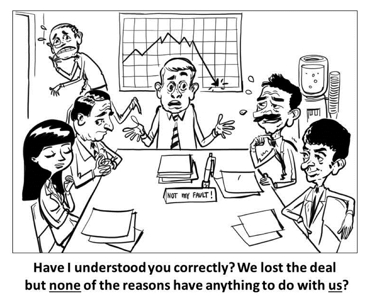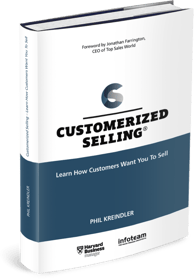 Have you seen a PC with an out of date operating system, something like the old Microsoft MS-DOS? It works – sort of. But compared with a PC running on the latest version of Windows it sadly underperforms. We regularly see Sales People who haven’t updated their own “Operating System” and as a consequence are underperforming.
Have you seen a PC with an out of date operating system, something like the old Microsoft MS-DOS? It works – sort of. But compared with a PC running on the latest version of Windows it sadly underperforms. We regularly see Sales People who haven’t updated their own “Operating System” and as a consequence are underperforming.
Everything is changing
Gone are the days when you could work in the same old way and continue to be successful.
A client who used to run a profitable global business by supplying tyres to mining companies has had to transform their offer and sales approach in the face of a huge downturn in the industry and reduced margins from the manufacturers.
A world-leading supplier of equipment for technical education needs a totally new skill set to achieve their growth targets and transform to their future role as a solution provider.
The pressures affecting private banks, particularly Swiss ones, mean that Relationship Managers need to upgrade the way they work or risk becoming obsolete. But many of the Relationship Managers in Swiss private banking are working in exactly the same way they always have. They get OK results but little by little they are performing less well and they blame everything but their own performance. Others are adapting to the changing market and getting increasingly good results. The challenge is to get everyone to adopt new ways of working.
6 ways to make Sales People want to change
Based on successful sales transformations, these elements are crucial to a programme that will engage and change the behaviour of both Sales People who are eager to change and the sceptical ones who would prefer not to change.
1. Lead from the top, drive from the bottom
You have to have a leadership team who recognises and identifies the problem and are committed to finding a solution. But top-down solutions rarely work so the solution has to be designed by the sales team with direction from the top.
2. Mix up the teams - put sceptics and upgraded Sales People together
All Sales People like to get good results. If sceptics work alongside people who get good results by working in new ways they will see the point of change.
3. Develop a Success Profile
Once you have defined the skills and competencies required for future success, use the success profile to benchmark each team member. Define learning journeys and individual development plans to help each person move from where they are now to where they need to be.
4. Build customer feedback and self-reflection into the Sales Process
Sales People who don’t want to change don’t seek feedback. But without feedback and self-reflection, there will be no change. I asked the Swiss bankers for feedback at the end of every meeting and they were eager to include that sort of questioning in their own sales process. If you want to learn more about how to develop a self-reflective mind-set, I recommend the book Customerized Selling - Learn How Customers Want You To Sell
5. Challenge the thinking of people who have not yet upgraded
This has to be done in a positive way. One of the best techniques in one-to-one situations like opportunity reviews is to refer to previous opportunities and ask questions like “Do you remember what happened in that sales opportunity? …. What could you do differently in this sale to avoid the same outcome?”
6. Get Sales People to think about their desire for personal change
I was very impressed by the book ‘Who Moved My Cheese?’ by Dr Spencer Johnson and am reading it again now. I recommend giving a copy to each member of your team and to discuss the learnings.
Change in the Swiss private bank
This is the process we have agreed with the bank mentioned earlier. The Heads and Deputy Heads of Relationship Management will communicate why they are backing this important transformation programme. Successful RMs will be interviewed to identify best practices and to get their buy-in.
The new Sales Engagement and Relationship Management toolkit will be defined around these best practices and will be the basis for their Success Profile. Everyone who has a skills gap will get the training and support they need to upgrade and managers will be accredited for successful implementation. Tools will be in place to make it easy to use the concepts in daily business. Teams will be rejigged to make sure people reluctant to change are surrounded by enthusiasts for the new way of working.
I am confident that by the end of this everyone will be fully upgraded and better equipped to achieve their goals.
 Customerized Selling: Learn How Customers Want You To Sell
Customerized Selling: Learn How Customers Want You To Sell
Learn how customers want you to sell. In Phil Kreindler’s book, Customerized Selling, he incorporates how customers define good selling into all aspects of sales force development.
